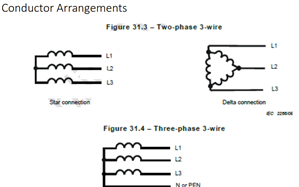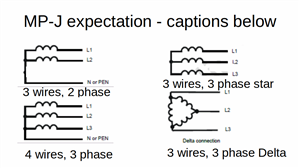BS7671 shows diagrams of system types and earthing arrangements in the UK. Even a person fully converstant with the jargon would wonder why its sister version ROI have added two additional diagrams. maybe it is just up the pole or ground mounted supply transformers that they are shown for information
Chapter 3 Fig 31.3 of I.S. 10101: 2020 National Rules for Electrical Installations shows these diagrams if you + + and move across to centre of computer makes it easy to read.
ciftraining.ie/.../Presentation-for-Download.pdf
www.eeweb.com/.../
The NEC (National Electrical Code) the bible of the electrical construction industry USA, has a nice description- Polyphase circuits. Circuits running on AC and having two or more, interrelated voltages, usually of equal amplitudes, phase differences, and periods, ect. If a neutral conductor exists, the voltages referenced to the neutral conductor are equal in amplitude and phase. The most common version is that of three-phase, equal in amplitude, with phases 120' apart.
jcm



